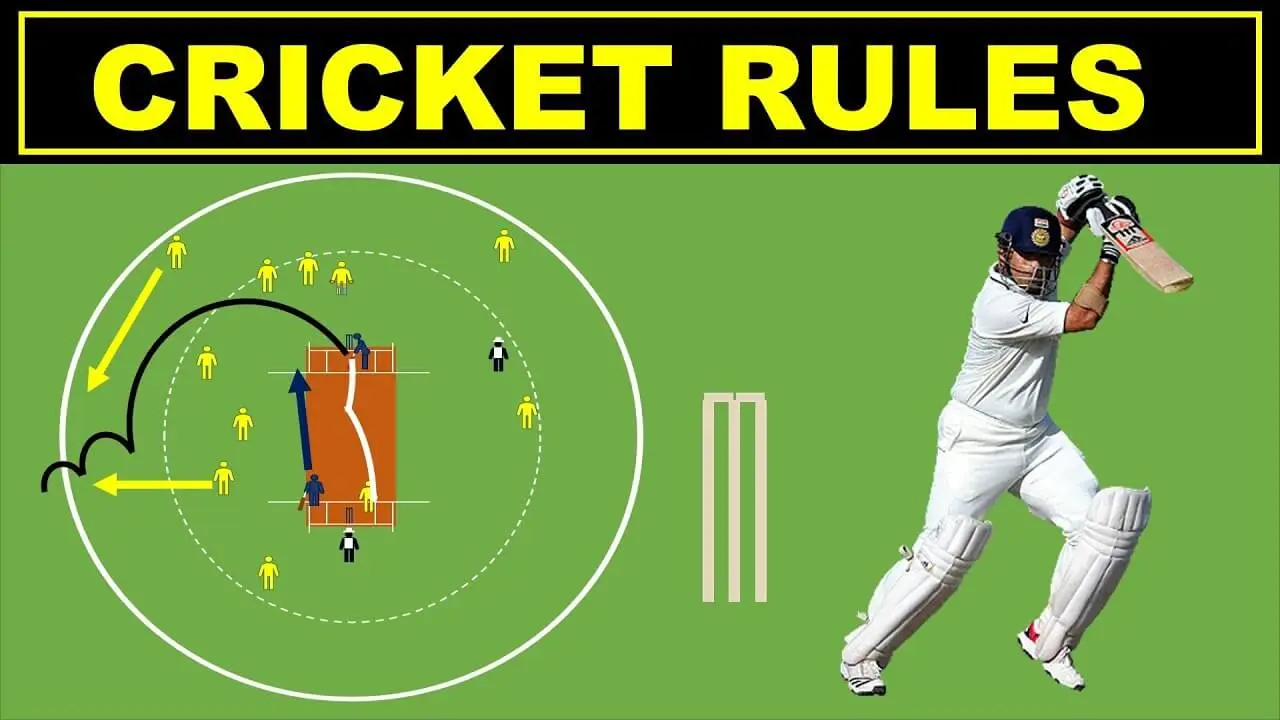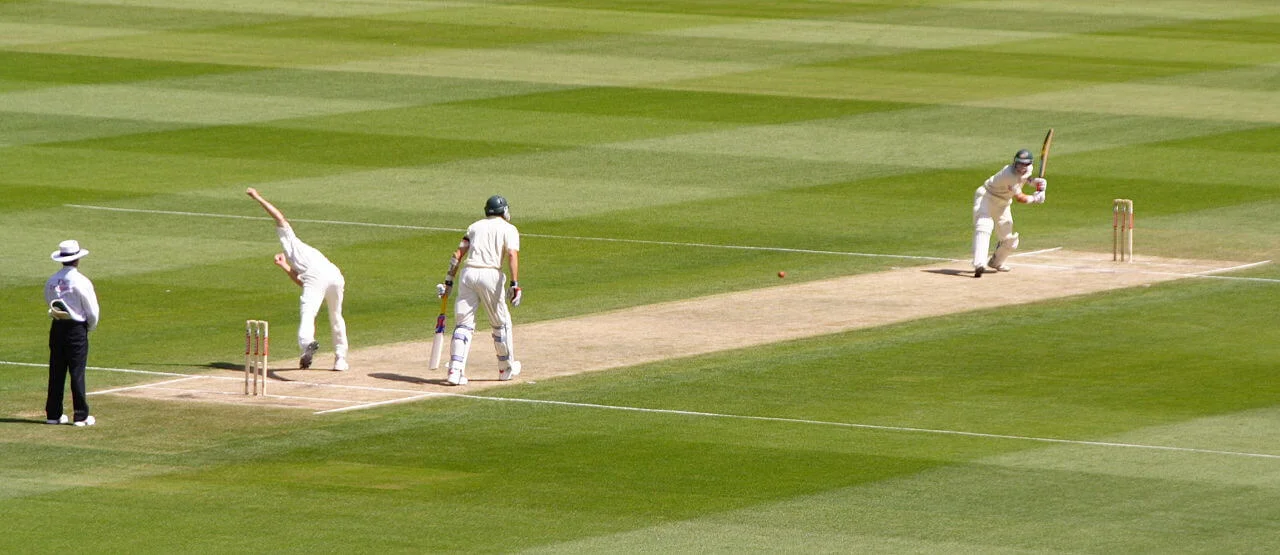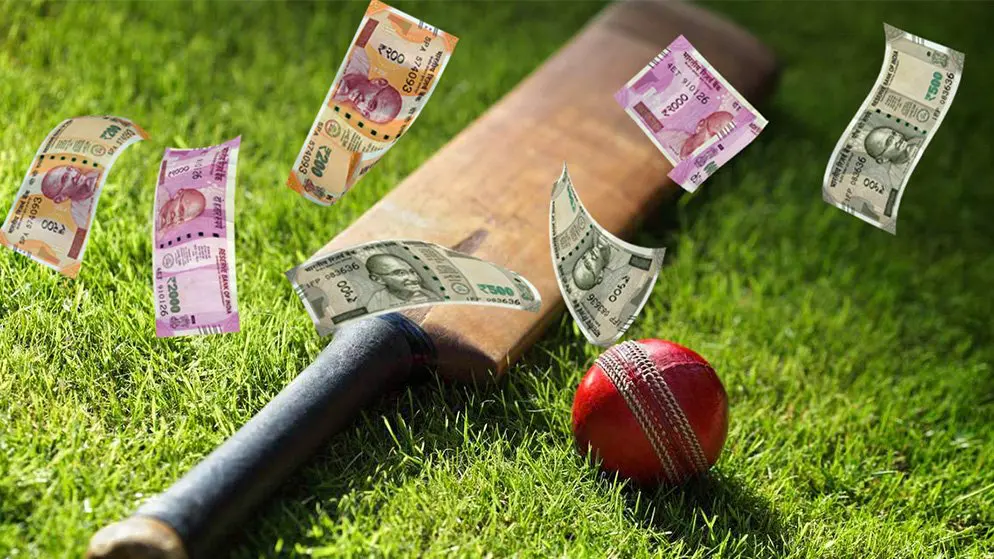Cricket, often referred to as “The Gentleman’s Game,” holds a special place in the hearts of sports enthusiasts around the world. With its rich history, complex rules, and unique blend of skill, strategy, and tradition, cricket has evolved into more than just a sport; it’s a cultural phenomenon. This introductory paragraph explores the essence of cricket, delving into its origins, values, and global significance.
History of Cricket
The history of cricket is a centuries-old tale that traces its roots to 16th-century England. Initially a rustic pastime played in local villages, cricket evolved and gained popularity over time.
In the 17th century, organized forms of cricket emerged, played by teams representing parishes and villages. By the 18th century, it became a pastime for the upper class, with the Hambledon Club in 1750 often regarded as the birthplace of modern cricket.
The 19th century witnessed cricket’s spread to other parts of the British Empire, including the West Indies, Australia, and the Indian subcontinent. The MCC and its rules, along with the introduction of overarm bowling in the 1860s, helped standardize the game.
The 20th century saw cricket’s global expansion, marked by iconic rivalries like the Ashes. Limited-overs cricket, starting with ODIs in 1971, and the subsequent T20 format brought in new audiences.
Throughout history, legendary players like Sir Don Bradman, Sir Garfield Sobers, and Sachin Tendulkar have left their mark. Today, cricket is a global phenomenon with leagues like the IPL captivating diverse audiences.
Cricket’s journey continues, embracing tradition while looking ahead to exciting future chapters.

Cricket Formats
Cricket is a diverse sport with various formats, each offering a unique experience for players and fans. The main cricket formats include:
- Test Cricket:
Test cricket is the longest and oldest format, known for its tradition and endurance.
Matches can last up to five days, with each team playing two innings.
It emphasizes strategy, technique, and endurance.
- One Day Internationals (ODIs):
ODIs are limited-overs matches with each team facing a set number of overs (usually 50) per innings.
They provide a balance between traditional and shorter formats.
ODIs are known for thrilling encounters and strategy.
- Twenty20 (T20):
T20 cricket is the shortest and most explosive format.
Matches are typically completed in about three hours.
It focuses on aggressive batting, and bowlers employ various tactics to limit runs.
- T10 Cricket:
T10 is an even shorter format with matches lasting only 10 overs per side.
It’s known for its high-scoring games and aggressive play.
T10 cricket is popular in leagues like the Abu Dhabi T10 and others.
- Women’s Cricket:
Women’s cricket follows similar formats to men’s cricket, including ODIs, T20s, and Tests.
It has gained significant popularity and recognition in recent years.
Each format has its unique appeal, attracting different audiences and showcasing various skills. Cricket enthusiasts can enjoy a wide range of cricketing experiences, from the patient and strategic Test matches to the fast-paced excitement of T20s and T10s.

Cricket Equipment
| Equipment | Description |
| Bat | A wooden bat with a flat front and a V-shaped back. |
| Ball | A leather cricket ball; red for Test matches and white for limited-overs formats. |
| Stumps and Bails | Three wooden stumps set into the ground and small wooden bails placed on top of the stumps. |
| Pads | Protective leg pads worn by batsmen to guard against ball impacts. |
| Gloves | Gloves worn by batsmen to protect hands and fingers and for a better grip on the bat. |
| Helmet | Mandatory headgear for batsmen and wicketkeepers to protect against head injuries. |
| Thigh Guard | Thigh protection for batsmen against ball impacts. |
| Abdominal Guard | Groin protection for male players. |
| Chest Guard | Some batsmen use chest protection for the upper body. |
| Wicketkeeping Gear | Additional protection, gloves, and sometimes a helmet for the wicketkeeper. |
| Footwear | Cricket shoes with spikes to provide grip on the field. |
| Clothing | Traditional whites for Test matches and colored clothing for limited-overs formats. |
| Kit Bag | A specialized bag for storing and carrying all cricket equipment. |
| Accessories | Sunglasses, hats, and sunscreen for protection against sun and heat. |
This is the basic equipment used in cricket to ensure safety and good gameplay. The choice of specific equipment may vary depending on the player’s role and personal preferences.

Cricket Grounds and Pitch
Cricket is a sport deeply connected to its playing surface, and the conditions of the cricket ground and pitch have a significant impact on the game. Here, we’ll explore the key aspects of cricket grounds and pitches.
Cricket Ground:
Cricket is typically played on an oval or circular field known as the cricket ground. The size and dimensions of the ground can vary, but there are certain standard elements:
- Boundary: The outer boundary of the field defines the maximum distance a batsman can hit the ball for a six or four.
- Playing Area: Within the boundary, there’s the main playing area, which includes the pitch, the 22-yard strip of compacted soil where most of the action takes place.
- Outfield: The area between the pitch and the boundary is known as the outfield. It’s usually covered in well-maintained grass.
Cricket Pitch:
The cricket pitch is a specialized area where the bowler delivers the ball to the batsman. Here are some critical points about the pitch:
- Length: The pitch is 22 yards (20.12 meters) long, with stumps at each end. This distance is a fundamental measurement in cricket.
- Condition: The pitch is made of compacted clay and can have varying characteristics. It can be flat and dry or offer assistance to bowlers with grass cover or cracks.
- Creases: Batsmen stand in front of the stumps, and there are markings called creases to define their positions. The popping crease marks where the batsman stands, and the bowling crease marks where the bowler delivers the ball.
- Stumps and Bails: The stumps are three vertical wooden posts, and the bails are small wooden pieces placed on top of the stumps. Dislodging the bails is how a wicket is taken.
Pitch Conditions:
Pitch conditions play a crucial role in the outcome of a cricket match:
- Batting-Friendly: Some pitches are flat and offer consistent bounce and pace, making it easier for batsmen to score runs.
- Bowling-Friendly: Pitches with grass or cracks can assist bowlers by providing movement and uneven bounce.
- Deterioration: Pitches can deteriorate over the course of a match, especially in longer formats like Test cricket. Wear and tear can make the pitch more challenging to bat on.
- Weather Impact: Weather conditions, such as rain, can affect the pitch. Rain can make it damp, leading to slower bowling and swing.
Home Advantage:
Teams often have a home ground where they are more familiar with the pitch and ground conditions. This home advantage can influence their strategy and performance.
Understanding the cricket ground and pitch conditions is vital for both teams to formulate their game plans effectively. It adds an intriguing dimension to the sport, making cricket a battle not just between players but also between the team’s strategy and the conditions they encounter.

Cricket Rules and Gameplay
Cricket is a complex sport with a rich set of rules and gameplay intricacies. Here, we’ll delve into the fundamental rules and gameplay aspects of cricket.
Objective:
The primary objective in cricket is for one team to score more runs than the opposing team while fielding and bowling out the opposition.
Teams:
Each cricket team typically consists of 11 players, divided into batsmen and bowlers.
The team that scores the most runs in its innings and dismisses the opposition is declared the winner.
Innings:
A standard cricket match consists of two innings for each team.
In limited-overs formats, such as One Day Internationals (ODIs) and Twenty20 (T20) matches, each team usually has a single inning.
Playing Area:
Cricket is played on an oval or circular field called a cricket ground.
The main playing area includes the pitch, which is a 22-yard strip in the center, where most of the action takes place.
Batting:
Batsmen aim to score runs by hitting the ball bowled by the opposition’s bowlers.
Runs are scored by running between the wickets or by hitting boundaries (four or six runs).
Bowling:
Bowlers attempt to dismiss batsmen by getting them out in various ways, such as bowling them out, catching them, or leg before wicket (LBW) decisions.
A team typically uses several bowlers, each with different styles, to create strategic variations.
Fielding:
Fielders try to prevent runs by stopping the ball, fielding cleanly, and attempting run-outs.
Fielding positions are crucial, and fielders are strategically placed to maximize the chances of getting batsmen out.
Cricket Formats:
Cricket is played in different formats, including Test cricket, One Day Internationals (ODIs), and Twenty20 (T20) cricket. Each format has its own set of rules and durations.
Test Cricket:
Test matches are the longest format, lasting up to five days.
Each team has two innings, and there are no limits on the number of overs per day.
One Day Internationals (ODIs):
ODIs have a limited number of overs per inning, usually 50 overs per team.
Matches are completed in a single day.
Twenty20 (T20) Cricket:
T20 matches are the shortest format, with each team facing 20 overs.
They are known for their fast-paced and high-scoring nature.
Umpires:
Umpires are responsible for enforcing the rules and making decisions during the match.
There are usually two on-field umpires and, in some cases, a third umpire who reviews certain decisions using technology.
Decision Review System (DRS):
In modern cricket, teams have the option to challenge umpire decisions using technology like ball-tracking and snickometers.
Sportsmanship:
Cricket places a strong emphasis on sportsmanship and fair play.
The “Spirit of Cricket” is a code of conduct that promotes respect, integrity, and the well-being of the game.
Cricket is a sport steeped in tradition and strategy, where subtle nuances can have a significant impact on the outcome. Understanding these fundamental rules and gameplay elements is essential for both players and fans to fully enjoy the game.
Cricket Teams and Players
Cricket boasts a vast array of teams and players, from international superstars to local heroes. International cricket features powerhouse teams like India, Australia, and England, known for their fierce rivalries. Each team showcases a lineup of skilled players specializing in batting, bowling, and fielding. Cricket fans worldwide follow the careers of legendary players like Sachin Tendulkar, Sir Don Bradman, and Sir Vivian Richards, celebrating their remarkable contributions to the sport’s history. Whether on the grand stage of Test and One Day Internationals (ODIs) or the thrilling spectacle of Twenty20 (T20) leagues, teams and players continue to captivate audiences with their exceptional talents and achievements.

Major Cricket Tournaments
Cricket is home to a plethora of major tournaments that capture the hearts of fans globally. Some of the most prestigious ones include:
- Cricket World Cup: The ICC Cricket World Cup is the pinnacle of One Day International (ODI) cricket. Teams from around the world compete for the coveted trophy in a format that spans several weeks, showcasing exceptional talent and intense rivalries.
- ICC World Twenty20 (T20) World Cup: T20 cricket’s popularity has soared, and this tournament is its grand stage. Teams play fast-paced, thrilling matches, making it a fan favorite.
- The Ashes: An iconic Test series between England and Australia, the Ashes is known for its rich history and fierce competition. It’s a symbol of cricketing supremacy.
- Indian Premier League (IPL): The IPL is the most famous T20 league globally. It attracts top international players and features franchise-based teams representing different Indian cities, delivering high-octane cricket entertainment.
- ICC Champions Trophy: Another prestigious ODI tournament, the Champions Trophy brings together the world’s top cricketing nations to compete in a short, intense format.
- Big Bash League (BBL): Australia’s premier T20 league, the BBL, boasts big hits, colorful fan engagement, and high-quality cricket.
- Caribbean Premier League (CPL): The CPL showcases the vibrant cricket culture of the West Indies. It’s known for its festive atmosphere and electrifying matches.
- Asia Cup: Cricketing powerhouses from Asia, including India, Pakistan, Sri Lanka, and others, participate in this ODI tournament, creating intense regional rivalries.
- County Championship: England’s domestic first-class competition, the County Championship, has a rich history and plays a crucial role in producing international talent.
- Women’s Cricket World Cup: The women’s game has gained immense popularity, with the World Cup being a major highlight. It showcases the remarkable skills and achievements of female cricketers.
These tournaments not only provide thrilling cricket action but also foster a sense of unity and competition among nations and franchises, making cricket a truly global sport.

Cricket and Culture
Cricket, often dubbed “the gentleman’s game,” is a sport that exudes grace, tradition, and strategy. It’s a game where patience and skill take precedence over raw power, and where moments of brilliance can be as subtle as a perfectly timed shot or a well-executed delivery.
At its heart, cricket is a battle of wits between batsmen and bowlers, a contest that can unfold over several days in Test cricket or conclude in a matter of hours in the fast-paced T20 format. The sport’s rich history, dating back centuries, has seen it evolve into various formats, each with its unique charm and challenges.
Cricket’s allure extends beyond the boundary ropes. It’s a sport that brings communities together, ignites passion and pride, and provides unforgettable moments that become part of a nation’s lore. From the iconic battles at Lord’s to the electric atmosphere of the Indian Premier League, cricket offers something for everyone.
Whether you’re an avid follower or a newcomer to the game, cricket’s blend of skill, strategy, and tradition is sure to captivate and leave you with a deep appreciation for this timeless sport.
Evolution of Cricket Broadcasting
The evolution of cricket broadcasting has been a fascinating journey, closely mirroring the technological advancements of the 20th and 21st centuries. From its early days when radio broadcasts painted vivid descriptions of matches for eager listeners to the modern era of high-definition television and live streaming, cricket broadcasting has come a long way.
Radio commentary was the first medium through which cricket enthusiasts could follow the game in real-time, with commentators painting vivid pictures of the action. However, it was the advent of television that truly revolutionized how cricket was consumed. The ability to watch matches live, see the players in action, and witness crucial moments up close transformed the fan experience. Iconic moments, like Sir Don Bradman’s final Test innings or Kapil Dev’s 175 in the 1983 World Cup, became etched in memory, thanks to television.
In recent years, the internet and mobile technology have further expanded the reach of cricket broadcasts. Live streaming platforms and mobile apps have made it possible to watch matches on the go, bringing the game to a global audience. Social media has allowed fans to engage with their favorite teams and players, sharing in the excitement of every boundary and wicket.
As we look to the future, the evolution of cricket broadcasting continues. With innovations like augmented reality, virtual reality, and interactive content, fans can expect an even more immersive and engaging experience. The journey of cricket broadcasting reflects not only the evolution of technology but also the enduring passion and global appeal of the sport.
Women’s Cricket
Women’s cricket has grown exponentially in popularity and recognition over the years, emerging from the shadows of men’s cricket to establish itself as a force to be reckoned with in the world of sports. What was once a niche sport has now become a global phenomenon, with women’s cricket competitions drawing large audiences and inspiring a new generation of players.
The Women’s Cricket World Cup, first held in 1973, played a pivotal role in propelling women’s cricket into the spotlight. This tournament showcased the remarkable talent and dedication of female cricketers, proving that the sport was not limited by gender. Over the years, women’s cricket has seen a surge in competitiveness and professionalism, with players from various countries honing their skills and achieving international recognition.
Women’s cricket is no longer just about the game on the field; it’s also a platform for empowerment and gender equality. Players like Ellyse Perry, Mithali Raj, and Suzie Bates have become role models for aspiring cricketers worldwide. The increasing investment, media coverage, and opportunities in women’s cricket signify a bright future for the sport, where talent knows no boundaries, and the passion for cricket unites fans across the globe.

Cricket’s Global Reach
Cricket, once considered a sport predominantly played and followed in a handful of countries, has steadily expanded its global reach over the years. While it remains most popular in countries like India, England, Australia, and Pakistan, cricket’s influence and fan base have transcended borders and continents.
The rise of T20 cricket, with its fast-paced and entertaining format, played a significant role in increasing the sport’s global appeal. T20 leagues such as the Indian Premier League (IPL) and the Big Bash League (BBL) have attracted top international talent, creating a worldwide fan following. These leagues are not only about cricket but also about entertainment, with music, cheerleaders, and fan engagement playing a crucial role in enhancing the spectator experience.
Additionally, international cricket competitions like the ICC Cricket World Cup and the ICC T20 World Cup have brought together teams from diverse cricketing nations, fostering a sense of unity and camaraderie among fans worldwide.
Cricket’s global reach is further exemplified by the emergence of associate and affiliate nations in the cricketing landscape. Teams like Afghanistan and Ireland have made significant strides and earned Test status, competing with traditional cricketing powerhouses on the international stage.
Moreover, the sport’s presence on digital platforms and social media has made it accessible to a broader audience. Fans from non-cricketing nations are now following the game, thanks to live streaming, highlights, and engaging content.
In essence, cricket’s global reach continues to expand, breaking down geographical barriers and uniting people from diverse backgrounds under the banner of this beloved sport.

Cricket and Sports Betting
Cricket and sports betting have a deep-rooted relationship, with cricket being one of the most popular sports for betting worldwide. The combination of the sport’s global following and the various formats it offers makes it an attractive option for both casual and professional bettors.
Here are some key points about cricket and sports betting:
- Popularity in Betting Markets: Cricket enjoys immense popularity in sports betting markets, especially in countries like India, where it’s almost a religion. The sport’s high-profile events, such as the ICC Cricket World Cup and T20 leagues, attract significant betting activity.
- Types of Bets: Betting on cricket offers a wide range of options. These include match result bets, where you predict the winner or if the match will end in a draw (for Test matches). There are also bets on individual player performance, such as top run-scorer or wicket-taker. Additionally, you can bet on various in-game events, like the number of runs scored in an over.
- Live Betting: In-play or live betting is particularly popular in cricket. With the game’s ever-changing dynamics, you can place bets on various outcomes during a match. This includes predicting what will happen in the next over or session, adding an extra layer of excitement for bettors.
- Statistics and Analysis: Cricket’s rich statistical data provides ample opportunities for bettors to analyze and make informed decisions. Stats like a player’s recent form, team performance on a particular ground, and head-to-head records can be crucial in betting strategies.
- Betting Strategies: Successful cricket betting often involves strategies that consider factors like pitch conditions, weather, team composition, and injury updates. Finding value bets, where the odds offered are better than your estimated probability of an event occurring, is a common approach.
- Challenges and Risks: While cricket betting can be lucrative, it’s not without risks. Factors like match-fixing scandals and the unpredictability of the sport make it essential for bettors to exercise caution and bet responsibly.
- Legal and Regulatory Framework: The legality of cricket betting varies from one region to another. Some countries have well-defined regulations and licensed bookmakers, while others prohibit or heavily regulate betting activities. It’s crucial for bettors to be aware of the legal landscape in their respective jurisdictions.
In conclusion, cricket and sports betting have a symbiotic relationship, offering fans an additional layer of excitement and engagement with the sport. However, responsible betting practices, including understanding the risks involved, are essential for those participating in cricket betting.
Conclusion
In conclusion, cricket is a fascinating sport with a rich history, diverse formats, and a global following. It has transcended boundaries and cultures, becoming a significant part of the sporting world. From its origins in England to its expansion into a global phenomenon, cricket’s evolution has been remarkable.
The various formats of cricket, including Test matches, One Day Internationals, and Twenty20 cricket, cater to a wide range of audiences, ensuring that there’s something for everyone. The sport has produced legendary players who are celebrated for their skill and dedication.
Cricket has also played a pivotal role in shaping the cultures and identities of many nations. It’s more than just a game; it’s a source of pride, passion, and unity for millions of people worldwide.
The sport has embraced technological advancements, with innovations like Decision Review System (DRS) and the use of data analytics enhancing the game’s fairness and strategy.
Cricket broadcasting has transformed the sport into a global spectacle, bringing the action to fans around the world. This accessibility has further fueled its popularity.
Women’s cricket has been on the rise, breaking barriers and inspiring the next generation of female players. The growth of women’s cricket is a testament to the sport’s inclusivity.
Cricket’s reach extends beyond the field, as it has become an integral part of the sports betting landscape, offering fans an exciting way to engage with the sport.
As cricket continues to evolve, it faces challenges like match-fixing scandals and the need for greater diversity and inclusion. However, its enduring appeal and ability to adapt suggest a promising future.
Whether you’re a die-hard cricket enthusiast or new to the sport, cricket’s diverse facets provide something to appreciate and enjoy. It’s a sport that brings people together, transcending borders, and creating lasting memories. Cricket truly is a gentleman’s game, and its legacy continues to grow.









Your review has been sent for moderation